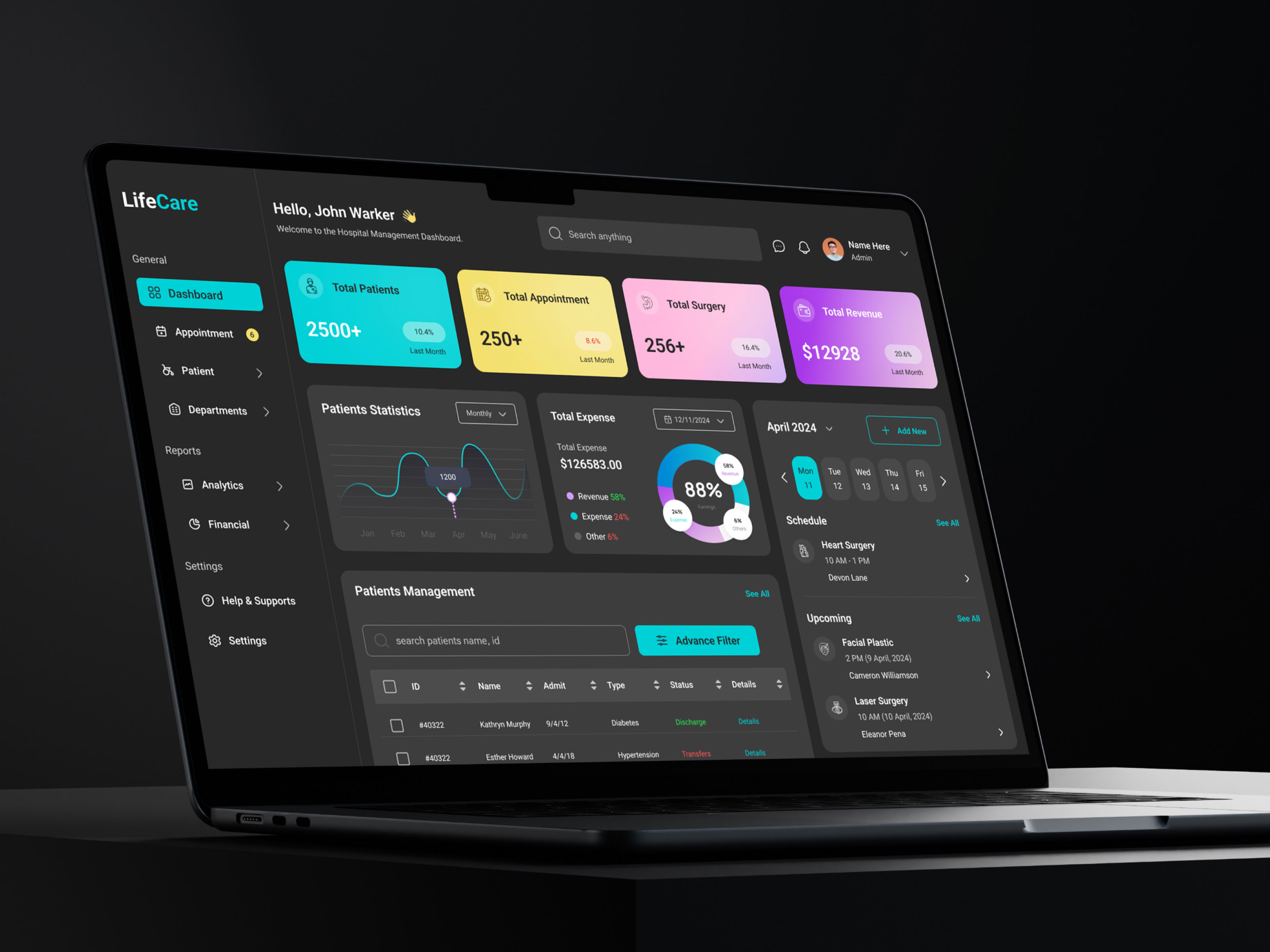The Ultimate Guide to Hospital Management Dashboard UI Design
Introduction
In the fast-paced world of healthcare, efficient management is paramount. Hospital administrators and staff require real-time access to critical information to make informed decisions and ensure optimal patient care. Enter Hospital Management Dashboard UI Design, a revolutionary tool poised to transform healthcare administration.
Understanding Hospital Management Dashboards
What is a Hospital Management Dashboard?
A Hospital Management Dashboard is a visual representation of key performance indicators (KPIs), metrics, and data relevant to hospital operations. It provides a comprehensive overview of various facets of hospital management, including patient flow, resource allocation, financial performance, and more.
Importance of Hospital Management Dashboards
Hospital Management Dashboards offer numerous benefits, including:
- Enhanced Decision-Making: By consolidating data from multiple sources into one intuitive interface, dashboards empower administrators to make data-driven decisions quickly.
- Improved Efficiency: Streamlined access to information reduces the time spent gathering and analyzing data, allowing staff to focus on core tasks.
- Better Patient Care: Real-time insights enable proactive management of resources, ensuring that patient needs are met promptly and efficiently.
Key Features of Hospital Management Dashboard UI Design
Customizable Dashboards
Modern Hospital Management Dashboards offer extensive customization options, allowing users to tailor the interface to their specific needs. Administrators can choose which metrics to display, adjust layout and design elements, and create personalized dashboards for different departments or user roles.
Real-Time Data Updates
One of the most significant advantages of Hospital Management Dashboard UI Design is its ability to provide real-time updates. Users can monitor key metrics such as bed occupancy rates, emergency department wait times, and surgical schedules as they change throughout the day, enabling proactive decision-making and resource allocation.
Interactive Visualizations
Effective data visualization is essential for understanding complex datasets quickly. Hospital Management Dashboards leverage interactive charts, graphs, and heatmaps to present information in a clear and intuitive manner. Users can drill down into specific data points, compare trends over time, and identify patterns and outliers with ease.
Integration with Existing Systems
Seamless integration with existing hospital management systems is critical for the success of Hospital Management Dashboard UI Design. Modern dashboards can pull data from electronic health records (EHRs), billing systems, patient scheduling software, and more, ensuring that users have access to comprehensive and up-to-date information.
Best Practices for Designing Hospital Management Dashboards
User-Centric Design
When designing Hospital Management Dashboards, it's essential to prioritize the needs of end-users. Conducting user research and gathering feedback throughout the design process can help ensure that the dashboard meets the needs of administrators, clinicians, and support staff.
Clarity and Simplicity
In a busy hospital environment, simplicity is key. Hospital Management Dashboards should present information in a clear and straightforward manner, avoiding clutter and unnecessary complexity. Use concise labels, intuitive navigation, and consistent design elements to enhance usability.
Mobile Responsiveness
With the increasing use of mobile devices in healthcare settings, it's essential to ensure that Hospital Management Dashboards are mobile-responsive. Designing for smaller screens and touch interactions can improve accessibility and usability for users who need to access the dashboard on the go.
Security and Compliance
Protecting patient data is paramount in healthcare. Hospital Management Dashboards must adhere to strict security and compliance standards, such as HIPAA, to ensure the confidentiality and integrity of sensitive information. Implement robust authentication mechanisms, encryption protocols, and access controls to safeguard data.









